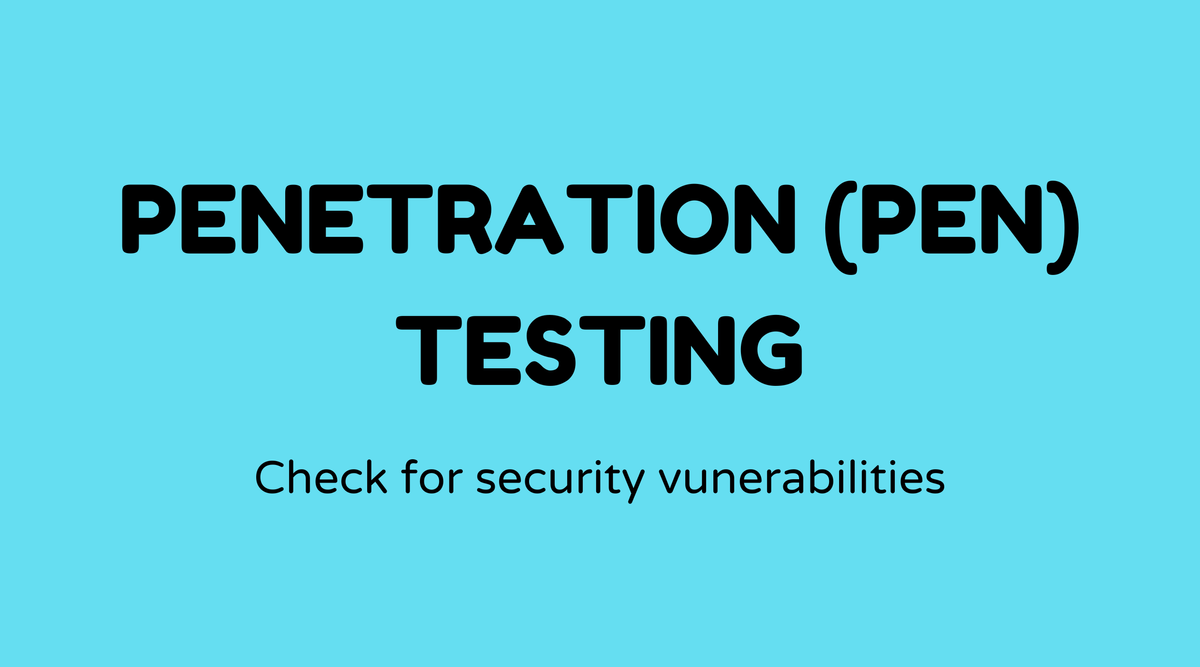Penetration (Pen) Testing

Overview of Penetration (Pen) Testing:
Starting off with a topic as intense as penetration testing is truly engaging! We’re entering a field where ethical hackers assume the role of cyber detectives, identifying vulnerabilities in systems before malicious actors can. This isn't just a technical concern; it's a fundamental element of network security. From businesses to government entities, everyone requires a level of protection that pen testing offers. Think of it as a fire drill but for your organization’s data and IT infrastructure.
Before getting into more detail, it’s important to recognize that the skill of penetration testing blends scientific methods with instinctive approaches. Analysts utilize a combination of software tools, creativity, and intuition. They do not merely evaluate systems; they refine them, ensuring they are well-prepared to counter potential threats.
Why Penetration Testing Matters:
You might wonder, why invest in pen testing? Imagine leaving your home doors open all the time. Sounds unsafe, right? That’s analogous to having untested IT systems. Cybercrime is not just a news headline; it presents real financial and reputational dangers. Pen testing aids in reducing these threats by revealing possible security breaches.
This proactive method helps organizations maintain their reputation, uphold customer trust, and comply with regulations like GDPR. In the current environment, nearly every business transaction relies on the internet. Ensuring these systems are secure is an absolute necessity.
What is Penetration Testing:
To break it down: penetration testing involves simulating cyber-attacks against your computer system to identify vulnerabilities that could be exploited. Often abbreviated as "pen testing", this process is akin to a health check for your network’s security protocols.
Tools and methods vary greatly - from using software like Nmap to hands-on efforts where testers try to breach network defenses manually. The end goal? Identify weaknesses before cybercriminals do.
Styles of Pen Testing:
- Black Box Testing - Testers have no prior information about the system.
- White Box Testing - Complete disclosure of system details is provided to testers.
- Gray Box Testing - Testers have partial knowledge of the system.
How to Conduct Pen Testing:
Preparing for pen testing involves careful planning. Here’s a simple yet informative breakdown:
- Preparation: Define the scope and extent of the test. What systems will be tested? What's off-limits?
- Discovery: Gather information through open-source resources and identify possible entry points.
- Attack Design: Create strategies and tools for testing.
- Execution: This phase involves launching simulated attacks.
- Analysis & Reporting: Collect results, analyze them, and produce detailed reports suggesting remedial actions.
- Remediation: Implement the recommended measures to enhance system protection.
An important note: pen testing isn't a one-off task. Regular testing is necessary to ensure ongoing security.
Sample Agenda of Penetration Testing Workshop:
Planning a penetration testing workshop? Here’s a proposed agenda:
| Time | Activity |
|---|---|
| 09:00 AM | Introduction & Objectives |
| 10:00 AM | Understanding Cyber Threats |
| 11:00 AM | Network Mapping and Intelligence Gathering |
| 12:00 PM | Lunch Break |
| 01:00 PM | Hands-On Session: Simulating Attacks |
| 03:00 PM | Report Writing & Mitigation Planning |
| 04:00 PM | Open Discussion & Q&A |
| 05:00 PM | Closing Remarks |
The agenda keeps the workshop lively and interactive while covering essential skills.
Examples of Penetration Testing:
Different industries engage in penetration testing to meet varying needs. Here are a few notable examples:
- Financial Institutions: With large amounts of sensitive data, banks often undergo pen testing to prevent data breaches.
- Healthcare IT Systems: Safeguarding patient information with thorough testing procedures ensures compliance with regulations like HIPAA.
- Retail E-Commerce Platforms: Routine pen tests protect customer transactions and personal data.
- Government Defense Agencies: These organizations require rigorous testing to shield against any possible espionage activities.
FAQs:
What is the main goal of penetration testing?
The primary objective is to identify security vulnerabilities before malicious hackers can exploit them.
How often should penetration testing be conducted?
For optimal security, pen testing should occur at least annually and after significant system updates or changes.
Can penetration testing disrupt regular operations?
With proper planning, disruption can be minimized. Tests are usually conducted during non-peak hours.
Are automated tools sufficient for penetration testing?
While they provide valuable insights, manual testing is vital to replicate real-world attack strategies.
What industries benefit most from penetration testing?
While all sectors benefit, banking, healthcare, retail, and governmental agencies are leading beneficiaries due to the sensitive nature of their data.
Who performs a penetration test?
Certified ethical hackers or experts known as penetration testers lead these evaluations to ensure system resilience.



